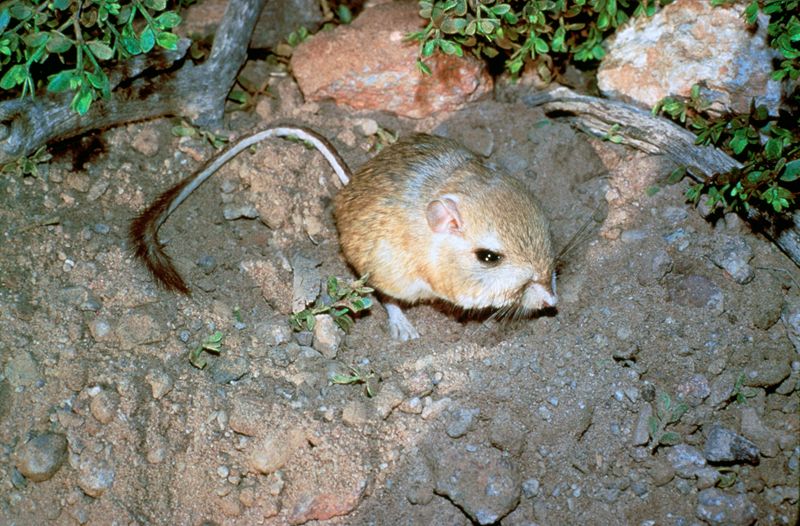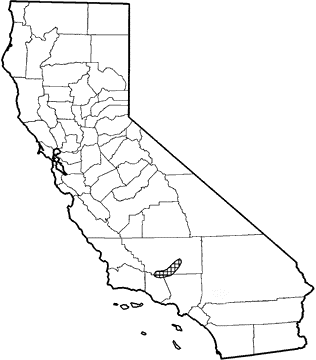Perognathus alticola inexpectatus
- Sensitive – U.S. Forest Service
- Species of Special Concern – California Department of Fish and Wildlife
- Vulnerable – IUCN Red List
- T1 Critically Imperiled – NatureServe

The Tehachapi white-eared pocket mouse (TWPM) is a subspecies of pocket mouse that was first discovered near Mount Pinos in 1926, when the Los Padres National Forest was still called the Santa Barbara National Forest.
Laurence M. Huey, a zoologist with the San Diego Natural History Museum, named the subspecies the Mount Pinos Pocket Mouse and wrote that it had been discovered in a grassy area among Jeffrey pines. The subspecies was later renamed the TWPM, as its geographic range includes the Tehachapi Mountains. With a population status that is not well understood, it is listed as a Species of Special Concern by the California Department of Fish and Wildlife.
Physical Identification
All pocket mice, including the TWPM, have fur-lined external cheek pouches that are used to collect seeds. The TWPM has a white patch at the base of the ear, an orange-brown back with a black wash, and a white underside. The tail is black at the end and slightly exceeds the head-body in length. Males and females average 6.5 and 5.9 inches in total length, respectively. Compared to its relative the white-eared pocket mouse (Perognathus alticola alticola), the TWPM is larger and has a darker tail. The two subspecies differ in geographic range, with P. a. alticolus restricted to the San Bernardino Mountains.
Natural History
Due to a lack of scientific data on the TWPM, its biology and habitat needs are not well defined. The subspecies has been found in small numbers in annual grasslands, pinyon-juniper woodland, Joshua tree woodland, Jeffrey pine forest, and sagebrush and rabbitbrush scrub, at elevations between 3,500 – 6,000 ft. Information on other species in the Perognathus genus suggests that the TWPM is active at night, forages on open ground and beneath shrubs, and burrows in loose soil for cover.
The mouse is presumed to feed on the seeds of grasses and forbs, and its predators are thought to include owls, hawks, foxes, skunks, and snakes. The mouse may aestivate (similar to hibernation) in the summer heat and hibernate in cold winter temperatures.
Threats
Limited information on the TWPM highlights the need for further research. Based on past surveys, the subspecies persists in populations that are small, dispersed, and vulnerable to habitat loss. The TWPM is likely declining due to threats that alter the land surface, including logging, agriculture, livestock grazing, mineral extraction, energy development, and road building.

The TWPM has been documented at Piñon Pines and Cuddy Valley near Mount Pinos, and the Los Padres National Forest serves as an important area for the survival of the subspecies. It is critical that proposed projects in the Los Padres National Forest undergo environmental review and address potential impacts to this sensitive, rare small mammal.
In fact, two commercial logging projects were recently approved in the Los Padres National Forest near Mt. Pinos. One of the projects is in an area where TWPM have been observed. However, the Forest Service did not conduct any focused surveys to determine whether the species may still be in the area. ForestWatch is working to prevent these and other types of damaging projects to occur in areas where TWPM may occur, especially without going through full environmental review.






